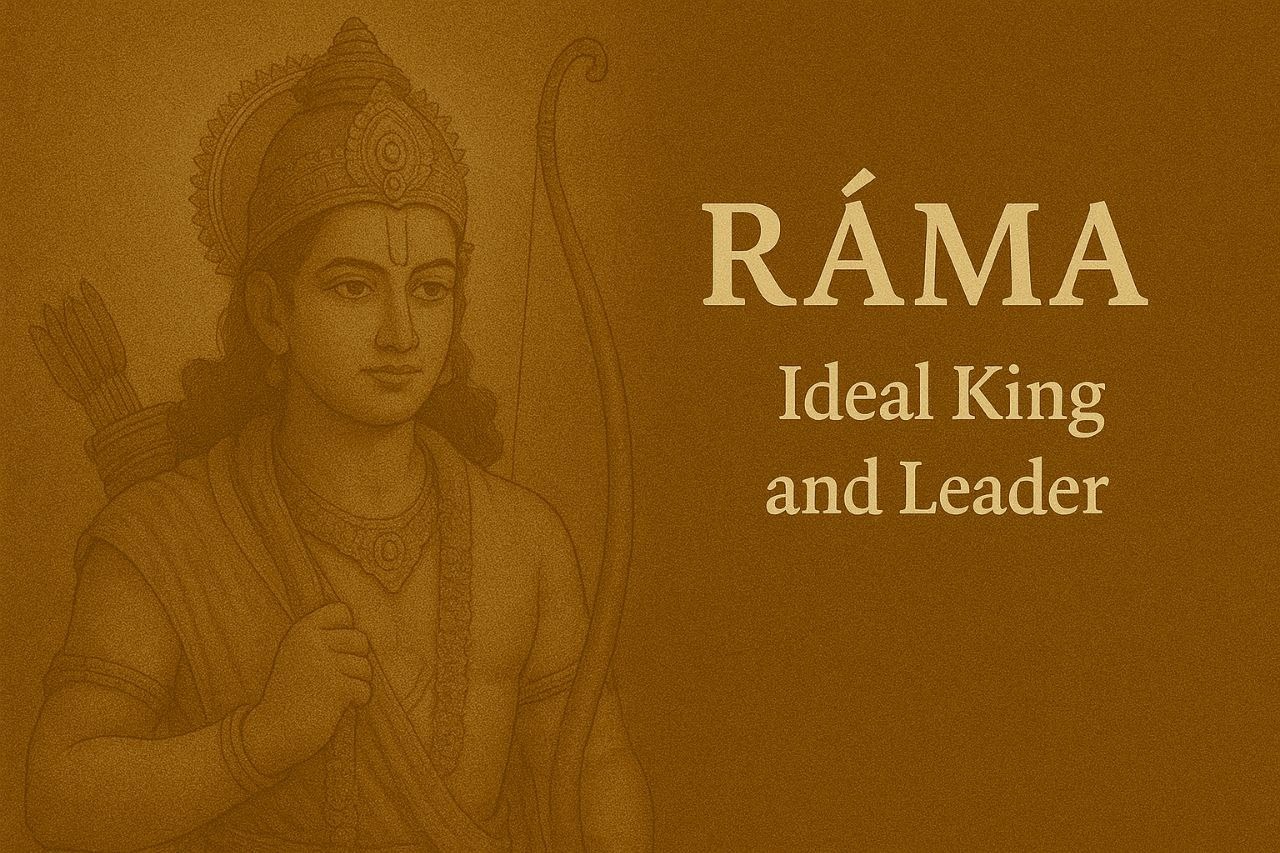Rāma ~ Ideal King and Leader

The Embodiment of Dharma in Action
Rāma is not just a character in the Rāmāyaṇa; he is the timeless icon of virtue, discipline, and leadership. His life is a luminous mirror in which every seeker can see reflections of dharma (righteousness), kārya (duty), and prema (love). Revered as the seventh avatāra of Viṣṇu, Rāma’s life illustrates how to live in alignment with cosmic principles, even in the face of personal loss, political betrayal, and deep sorrow.
Why Rāma Is the Ideal Leader
Rāma’s greatness stems not from conquest, but from restraint. He was powerful, yet never proud. He had every reason to rebel, yet always submitted to dharma. His leadership is not merely political; it is spiritual. It is based on the tenets of satya (truth), karuṇā (compassion), tyāga (sacrifice), and niṣkāma karma (selfless action).
🪔 "A leader is not one who commands by fear but one who inspires through conduct." ~ Adarsh Singh
Key Qualities of Rāma’s Leadership
1. Obedience Without Ego:
When Rāma was exiled to the forest on the eve of his coronation, he accepted the decision with grace, without bitterness. His action wasn’t just personal obedience to his father, but deep respect for rājadharma, the rule of law over personal emotions.
2. Inclusivity and Empathy:
Whether it was with Guha (a tribal chieftain), Hanumān (a Vanara), or Shabari (a humble devotee), Rāma’s love was impartial and pure. He broke barriers of caste, class, and species through his actions, not proclamations.
3. Upholding Dharma over Attachment:
The decision to send Sītā to the forest after her return from Lanka, though painful, was made to maintain his duty as a king toward public sentiment. Rāma prioritized the collective conscience of Ayodhyā over personal happiness, embodying the painful burden of kingship.
4. Non-retaliation:
Despite the injustices he faced, Rāma never sought revenge. Even when Vāli, a powerful king of Kishkindhā, was slain under questionable ethics, Rāma later explained the deeper dharmic logic behind his action, emphasizing niṣkāma karma again and again.
Why Rāma Still Matters Today
In Governance:
The concept of Rāma Rājya (Rule of Rāma) represents a golden era of justice, peace, and righteousness. It emphasizes clean administration, moral governance, and welfare of all, something sorely needed in today’s world.
In Personal Life:
Rāma teaches us how to remain poised amid chaos. Whether it is familial responsibilities, heartbreak, or political upheaval ~ Rāma responds, never reacts.
"To lead like Rāma is to hold fire in one hand and a flower in the other, balance, grace, and strength in perfect measure." ~ Adarsh Singh
Spiritual Symbolism
Rāma = The soul (Ātman)
Sītā = The mind (Manas)
Rāvaṇa = Ego (Ahaṅkāra)
Hanumān = The breath or prāṇa (life force)
Lankā = The body
In this spiritual allegory, when the breath (Hanumān) serves the soul (Rāma) selflessly, it helps rescue the mind (Sītā) from the clutches of ego (Rāvaṇa), restoring spiritual harmony.
Rāma is not merely a figure of devotion, but a living principle. He is the ideal human (Maryādā Puruṣottama), one who lives with dignity, courage, and unwavering faith in dharma. His life is not to be imitated literally, but to be meditated upon deeply.
🕊️ "Rāma doesn’t reside in a temple or in the sky, he resides in the moment you choose dharma over desire." ~ Adarsh Singh
Fri Jul 25, 2025
